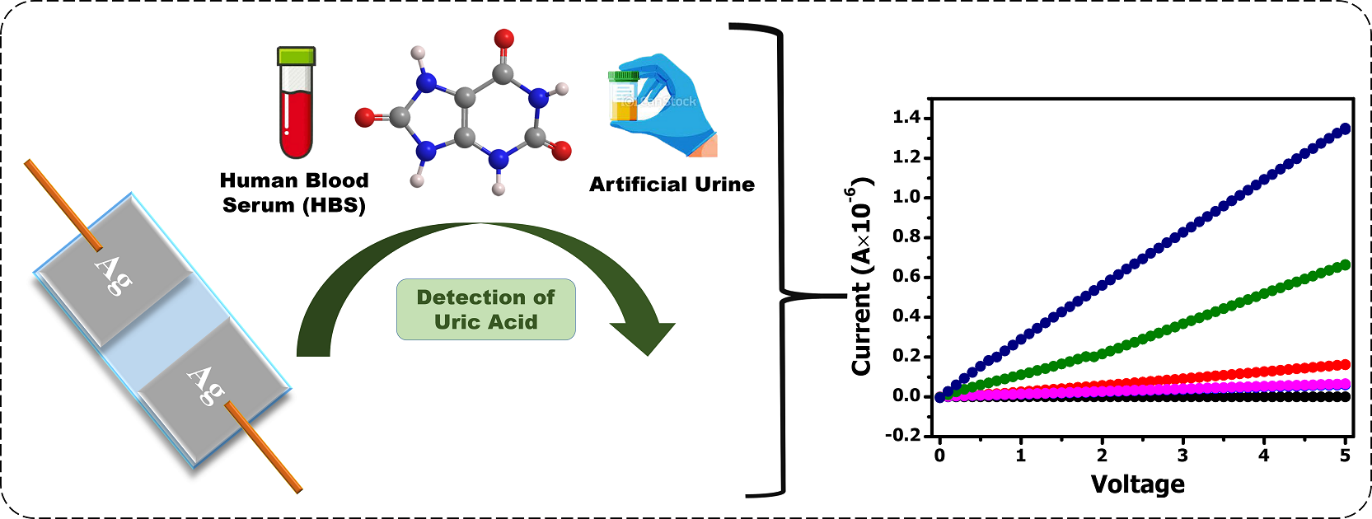A new flexible bio-electronic uric acid detecting device has been fabricated that can be used for various applications such as wearable sensors and point-of-care diagnostics.
Uric acid is one of the most important antioxidants that maintain blood pressure stability and reduce oxidative stress in living beings. The usual range of uric acid in blood ranges from 0.14 to 0.4 mmol dm-3, and for urine, 1.5 to 4.5 mmol dm-3. However, the fluctuation of uric acid levels due to the lack of balancing between the production and excretion causes several diseases like hyperuricemia, which in turn may lead to gout disease, type 2 diabetes, increase risk of cardiovascular diseases, Lesch–Nyhan syndrome, hypertension, and renal disorders.
Researchers from the Institute of Advanced Study in Science and Technology (IASST), an autonomous institute of the Department of Science and Technology (DST), fabricated this device made up of reduced phosphorene quantum dots -- a new class of zero-dimensional functional nanostructures with unique physicochemical and surface properties. The quantum dots show distinctive electrical performance in biomedical applications and so can be used in fabricating high-performance electrical biosensors.
The current voltage and the impedance (opposition electron flow) responses for the fabricated device have been studied with increased uric acid concentration. With the increase in uric acid concentration, the current density increases and shows a maximum current of about 1.35 ×10-6 A.
The fabricated device shows reversibility in interaction with the uric acid, which repeatedly enables the use of the device for sensing experiments. It outperforms all currently available ones in terms of effectiveness and cost because it doesn't need any enzymes.
The response of the fabricated device was investigated with real samples like human blood serum and artificial urine. The device so developed is simple, portable, cost-effective, and easy to fabricate for detecting uric acid with a limit of about 0.809 µM. This work, led by Prof. Neelotpal Sen Sarma and his Ph. D student Nasrin Sultana was recently published in the journal ACS Applied Electronic Materials.

Publication link: https://doi.org/10.1021/acsaelm.2c01528
Contact add: Prof. Neelotpal Sen Sarma (neelot[at]iasst[dot]gov[dot]in)






























